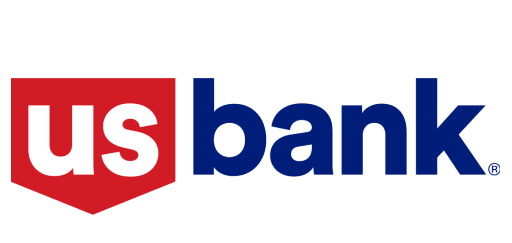


The Best Checking Accounts For Teens 2024
Empower teens to take control of their finances with our comprehensive guide to the best checking accounts tailored specifically for young individuals.
Table Of Contents
Discover the top account options that offer teen-friendly features, low fees, convenient access, and valuable financial education tools to foster responsible money management skills from an early age. Say goodbye to the piggy bank and hello to a world of financial independence as we help you navigate the realm of personal finance and make your money work for you.
Teen checking accounts can be the building block to a solid financial future. It can give your teen the freedom to make financial mistakes without suffering major consequences. It can also help them feel independent.
USAA Youth Spending Account

Show More Details
Adults with a USAA account can set up a checking account for their children starting at any age with a $25 minimum deposit. The guardian is a joint account holder with the child.
Starting at age 13, guardians can grant permissions to their teen: online account management, mobile app, ATM privileges, remote deposits, and a debit card. Guardians customize daily withdrawal limits.
USAA has the option to freeze a lost or stolen card and does not charge fees for accidentally overdrawn accounts.
Additional Details
The Youth Account won’t earn any interest unless it maintains a Daily Ledger Balance of $1,000 or more.
When the teen turns 18, the Youth Spending Account automatically converts to a USAA classic checking account. The guardian remains a joint account holder unless the teen changes it.
Capital One MONEY Teen Checking Account

Show More Details
Capital One offers the MONEY Teen Checking account starting with children aged 8. This joint checking account allows guardians to freeze lost/stolen debit cards and initiate one-time or recurring deposits to their child’s account from any bank’s checking account.
Kids are automatically issued a debit card and have access to online banking and the mobile app. They can set budgets and savings goals from the app and guardians can issue “rewards” for meeting a savings goal.
This checking account earns 0.10% APY on any account balance.
This account is eligible to convert to a Capital One 360 Checking Account when the teen turns 18, but it’s not automatic. The MONEY account will stay open unless the teen intentionally converts it.
Additional Details
If guardians do their banking at a different institution, they can link any checking account to their teen’s MONEY account. The guardian does not need to have a separate Capital One account.
Guardians can lower the daily transaction limit, but they must call Capital One; they can’t do it from their online account.
Chase High School Checking

Show More Details
Adults with an existing Chase checking account can open a Chase High School Checking Account for their teen. Guardians are co-owners of the account and can view all account activity and receive spending alerts.
This checking account must be set up in person at a Chase branch, and teens receive their own debit card.
Guardians do not set up spending limits, but can add funds and view spending. This teen checking account is more hands-off than others, but still allows monitoring.
The mobile app for teens offers a free financial literacy course and has the option to set up automatic savings deposits – but you must open a separate Chase Savings Account. High School Checking Account holders are not charged fees for either the checking or savings accounts.
Additional Details
The High School Checking Account will automatically convert to a Chase Total Checking account when the teen turns 19. Chase offers many different checking account options, especially if the teen is enrolled in college.
Alliant Credit Union Teen Checking Account

Show More Details
Alliant Credit Union offers a higher-yield checking account for teens between 13-17. Accounts with electronic statements and a monthly recurring deposit – like a paycheck – will earn 0.25% APY.
As joint account holders, guardians can access and view their teen’s spending at any time. Guardians can set up optional account alerts, like if the teen makes a purchase over a certain amount.
Guardians do not set spending limits on this account. Alliant limits teen accounts from spending more than $5,000 daily in signature-based purchases, and up to $500 daily on ATM cash withdrawals or PIN purchases.
Teens must have a guardian co-owning the account with them. There is no minimum balance.
Cash withdrawals from Alliant ATMs are free; Alliant provides up to $20 in monthly rebates for ATM charges from non-Alliant ATMs.
Additional Details
Unlike most teen checking accounts, Alliant offers paper checks. These will have both account holders’ names on them. The first box is free; after that, there is a charge for checks.
The Alliant Student Checking Account automatically converts into a regular Alliant Checking Account when the teen turns 18. The guardian remains a joint owner of the account unless removed.
Wells Fargo Clear Access Banking

Show More Details
The Wells Fargo Clear Checking Account is available to teens between 13-17 with an adult co-owner on the account, or young adults 17-24 without an adult.
This checking account does not earn interest and is designed with low-balance holder in mind.
The Clear Checking account offers a mobile app, online banking, and no minimum balance fees. A minimum deposit of $25 is required to open the account.
This account doesn’t charge any overdraft fees. While there is a $5 monthly fee, this is waived for the account holder under 24 years old.
Additional Details
Keep in mind that a Clear Access Banking account must be opened in-person, at a Wells Fargo branch location.
Teens 18 and older can open an account online.
US Bank Youth Bank Smartly Account

Show More Details
Teens between the ages of 13-17 can open a Bank Smartly account jointly with a guardian. Both people have access to the online account, and the teen receives a debit card. A minimum deposit of $25 is required.
This checking account earns a small amount of interest, depending on the balance.
There are additional perks if the Bank Smartly Account is linked to a savings or brokerage account with US Bank, like a limited number of free trades per year and complimentary virtual consultations with a wealth management advisor.
Until age 24, Youth Accounts are automatically enrolled in the Smart Rewards Program, which waives overdraft fees under $50 and offers an overdraft forgiveness program.
This account offers limited parental controls; rather, guardians have the same level of access as co-owners of the account.
The Bank Smartly Account offers a mobile app that allows you to set budgets. This account doesn’t offer paper checks.
Additional Details
The US Bank Youth Account waives the ATM fee for the first four non-US bank cash withdrawals per statement period. US Bank ATM withdrawals are always free.
The Bank Smartly Account does not change when the teen turns 18, but it can be transitioned to a single-owner account.
US Bank offers a Campus Banking program. At participating colleges, students can request a debit card with school branding or one that combines their university ID with their debit card.
Having your own checking account as a teen may be necessary when you start working. You’ll learn how to budget your money, save for long-term goals and manage your expenses.
Frequently Asked Questions (FAQs)
How Old Does A Minor Need To Be To Open A Checking Account?
Some accounts are available for children as young as 8 years old. Most are available starting at age 13.
What Access Do Parents Have To Teen Checking Accounts?
It depends on the account. All the teen checking accounts we reviewed above require a guardian to be a joint account holder, meaning they have the same level of access that the teen owner has. Some accounts also allow adults to set spending limits.
What Happens When The Teen Turns 18?
Some accounts automatically convert to a different checking account. If your 18th birthday is approaching, it’s best to review the fees on whichever teen checking account you are using to ensure that new fees don’t kick in once you become a legal adult.







